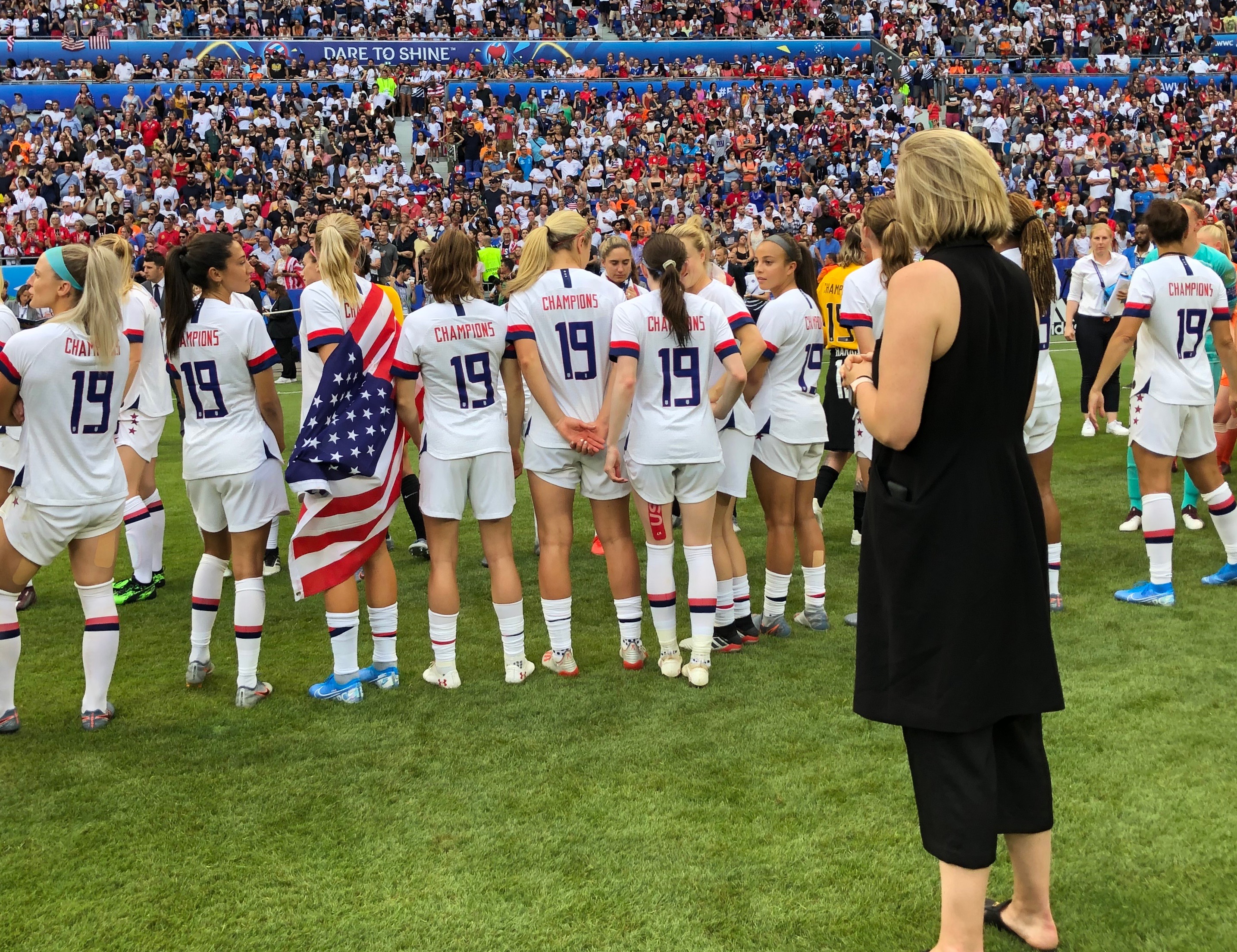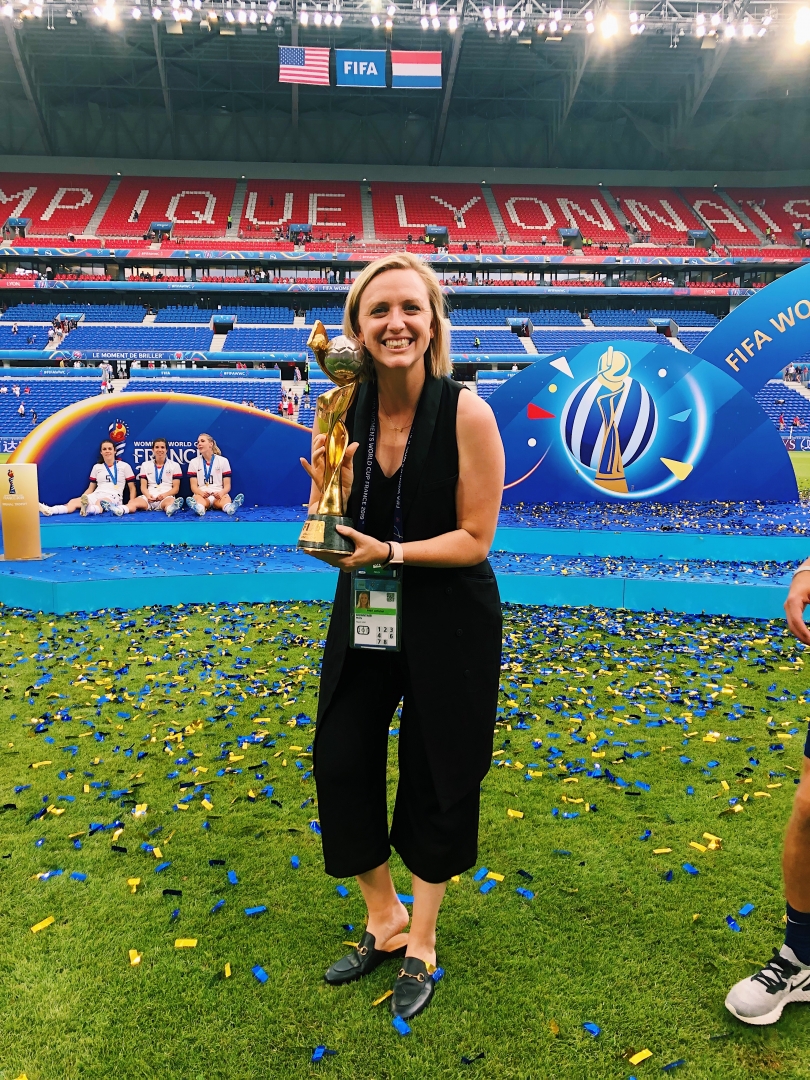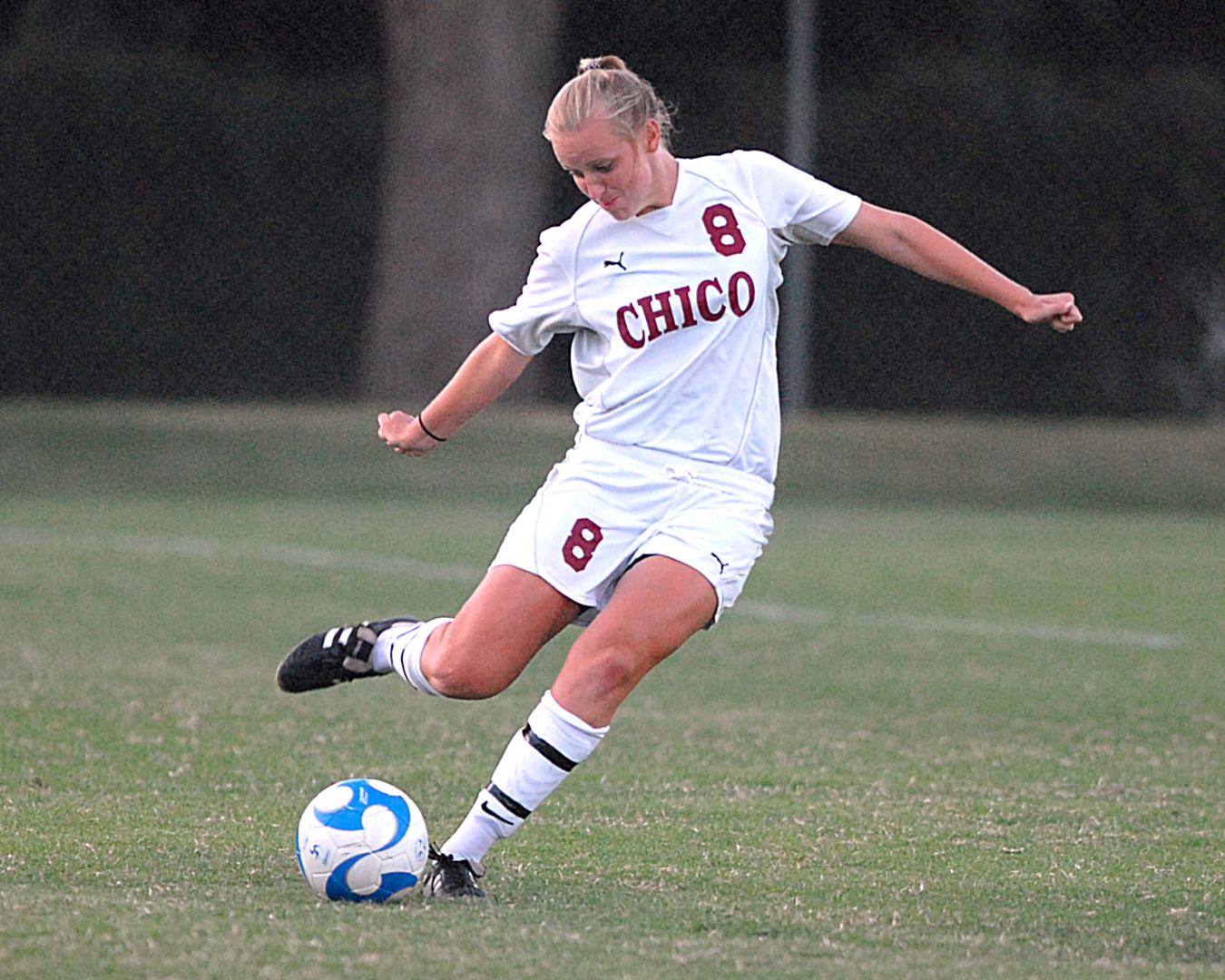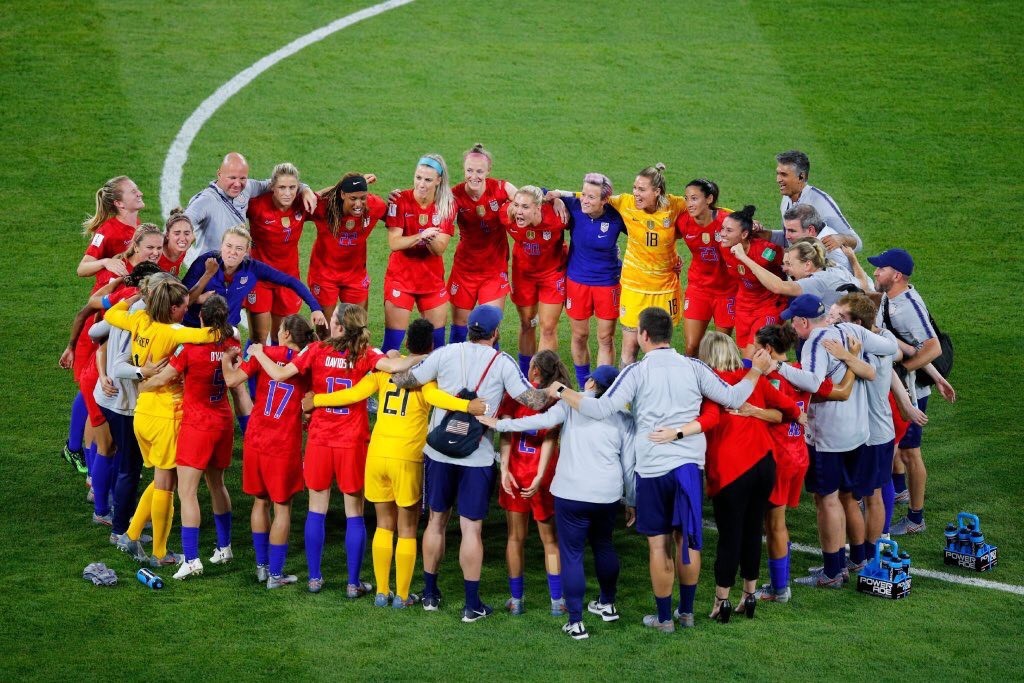US Women’s Soccer’s Star Behind the Scenes

Sitting in the Los Angeles office of the United States Soccer Federation, Molly Downtain is tethered to two of the world’s largest and most important women’s soccer showcases—the just-completed 2019 World Cup in France and the upcoming 2020 Olympics in Tokyo.
As part of her role as the Women’s National Team administrator, Downtain (Kinesiology, ’12) is wrapping up reports for hotel, food, and travel expenses accrued during the team’s 2019 World Cup victory in Europe and is also a good six months into planning site visits and securing pre-camp locations before next July’s Olympiad in Asia.
This is the world in which Downtain lives—pulled by plans of coming and going, winning or losing, the sure-things and what-ifs, while simplifying life for the US women’s national soccer team’s players and coaches so they can perform at their best.
“I’m a bit of a procrastinator and thrive in those pressure moments,” she said. “I live in pressure moments every single day.”
For example, during the team’s 2-1 World Cup semifinal match victory over England in July, Downtain had arranged for the team to remain in Lyon should they advance to the title game, while also securing plans to move the team nearly 200 miles to Nice the next day to play in the tournament’s third place game if they lost.
“I have to prepare both of those routes, no matter what,” Downtain said. “I’m the only person who gets to think about if we lose.”

Photo courtesy of Molly Downtain
Such is the behind-the-scenes balancing act Downtain pulls off before and after each game, from international matches to domestic friendlies. Each decision has a measure of intensity—from handling the movement of the team’s 50-plus people and 5 tons of equipment during the World Cup to making sure the players have post-game meals and preventing unforeseen problems like grounded airplanes from ballooning into fiascos—but that’s how she likes it.
“I go through a lot of sleepless nights,” Downtain admitted. “Not to say that’s a positive or negative, it’s just that I know things have to get done and I’m willing to do the grind. I don’t think you work in sports without understanding the grind.”
Downtain certainly embraced soccer’s demands at Chico State. As a four-year starter at center fullback for the women’s team, she is considered one of the strongest defenders the Wildcats have ever produced, anchoring a side that reached the 2011 NCAA Division II Final Four. Blonde-haired, blue-eyed, and unflappable on the back line, the fiercely competitive 5-foot-11 Downtain cut an imposing figure for Chico State’s stifling defense—but it wasn’t always easy.
“I always enjoyed working hard and grinding,” she said. “I’m a big body and I wasn’t ever going to be naturally fit, so I worked most summers to grind so that I could arrive for preseason and be an example and be able to finish fitness tests in the top 1, 2, or 3.”
That commitment paid off, as Downtain finished her career with stacks of post-season honors, including All-West Region First Team, All-American Third Team, and Final Four All-Tournament Team recognitions in 2011 alone.
Even before she actually attended Chico State, she felt comfortable here. In 2007, women’s head soccer coach Kim Sutton held spring practice at University Soccer Stadium for returning players, while sprinkling in a few recruits—Downtain among them—to see how they fit in.
Still a senior at Upland High School, Downtain roamed the field with a surprising and impressive authority. She seemed a good fit for the Wildcats’ back line, and most important of all, she was not afraid to communicate.

Chico State Athletics
“Kim said I was bossing her defense around,” Downtain said, laughing. “I was extremely vocal, probably too vocal.”
But Sutton saw great potential.
“I chose her because of her presence and her voice, and quite honestly, her leadership qualities,” Sutton said. “I was quite thrilled she was comfortable doing that at a young age.”
By her sophomore year, Downtain had been named a team captain—a rare honor for someone with her experience. But she took that role—and the responsibilities that come with it—seriously.
“There were times when Molly was so concerned about the team that she would forget about her own progress and development,” Sutton recalled, “because she was so worried about the team being ready and prepared.”
That big-picture focus was laying groundwork for her post-collegiate career. One of her kinesiology professors, Traci Ciapponi, herself a former track and field athlete at Chico State, was also her academic advisor.
“She was totally fine with me playing,” Downtain said, “but she was also realistic and said, ‘I know you enjoy playing right now, but what’s your plan after soccer?’”
Even as a teenager, Downtain envisioned herself as a future coach. After graduating from Chico State, she seized an opportunity as a volunteer assistant under longtime coach Janet Rayfield at the University of Illinois. She also began working toward her master’s degree in recreation and sports tourism management.
But after one season on the sidelines, Downtain had a change of heart.
“I hated coaching. I thought it was going to be something I was so passionate about because I was so passionate about playing,” she said. “I just did not like it. I was a nervous wreck the majority of the time and I got no joy from it.”
When Downtain shared her revelation with Rayfield, the veteran coach suggested a different path.
“She asked me if I liked the operations side,” Downtain said. “And I absolutely did, that’s where I’m happier. I’m good at it and I know I’m good at it.”
The next season, Downtain thrived as she operated more as a director of operations for the team. Rayfield, who’d worked for the US Soccer Federation in the past, encouraged her to consider an open position in operations within the organization. In 2014, Downtain got the job—and then completed her master’s degree online.
Being hired by the US Soccer Federation “was incredibly satisfying, but I was excited for the learning experience,” she said.
Downtain was doing work she loved in an environment she loved. She started with the under-17 and under-20 youth national teams, and eventually moved full time to the women’s side.
“I think the biggest shock, though, when I started working this current job was knowing I was working with the most famous soccer team in the world every single day,” she said.

Photo courtesy of Molly Downtain
Confronted again by the grind she loved, Downtain moved quickly up the ranks, elevating from youth World Cups in Canada and Jordan to scouting practice sites and hotel accommodations for the top women’s side prior to the 2015 World Cup in Canada and the 2016 Olympics in Brazil. In 2017, she took over full time as the Women’s National Team administrator.
Suddenly, she was running operations for the US Women’s National Team, at the highest level of competition. And with that, came challenges in an ever-changing environment.
“It’s prepping Plan A, but knowing that you have to have Plans B, C, and D lined up, as well,” she said. “My favorite part of the job is being a part of a world-class staff who gets to experience major world events on the inside and watch the hard work of professionals turn into tangible successes.”
Thanks to the Americans’ fourth-ever World Cup victory this summer, women’s soccer is perhaps on the precipice of a global explosion in popularity—largely due to intention on the part of the US Soccer Federation to make players more accessible and visible by interacting with fans and the community.
Downtain said the US national players have done a fantastic job of growing the game, both by the product they produce on the field as well as making themselves available after their club games or in the public. And as a former collegiate soccer player, she appreciates this all the more.
“I think they bring forth a platform that allows young girls to see that women can be confident, independent badasses while doing something they love and are passionate about,” she said. “I try to emulate those traits within my position as well.”
While doing what she can to support the push for a wider soccer audience—and equal pay for women athletes, Downtain’s comfort zone is behind the scenes. And yet, using her detail-oriented drive to demand operational precision, prepare alternate plans, and righting the ship when the unexpected occurs, her job could not be more vital to the team’s cohesion, fluidity, and success.
“She’s found her niche, and she’s very good at it,” Sutton said. “And that’s a great thing for anybody, to have a job you love.”


